Guests Online
Visitors from 06.02.2014
Cultural heritage
The complete list of historical buildings from Zalau can be found here.
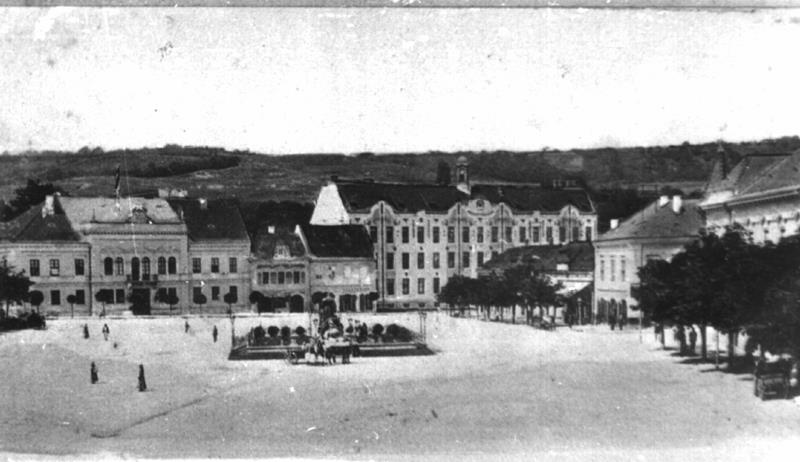 Iuliu Maniu Square (SJ-II-a-B-04990) - represents the historical center of Zalau, being surrounded by historical buildings loke Transylvania Building, the City hall, the County Cultural Department etc.; the Wesselenyi statue (another historical monument) is also here, as are the Cupids fountain, some other statues (mostly representing local figures or people that lived in the area) and some green spaces; the square is occupied by the intersection of the four main roads from Zalau (Mihai Viteazul Blvd., Gh. Doja Str., 22 Decembrie 1989 Str., C. Coposu Str.), which is why it cannot serve as a place for public gatherings or events as it happens in other Transylvanian cities (Baia Mare, Dej, Turda, Braşov, Sibiu); in the past, Iuliu Maniu Square was the main meeting space and the place where fairs were organized.
Iuliu Maniu Square (SJ-II-a-B-04990) - represents the historical center of Zalau, being surrounded by historical buildings loke Transylvania Building, the City hall, the County Cultural Department etc.; the Wesselenyi statue (another historical monument) is also here, as are the Cupids fountain, some other statues (mostly representing local figures or people that lived in the area) and some green spaces; the square is occupied by the intersection of the four main roads from Zalau (Mihai Viteazul Blvd., Gh. Doja Str., 22 Decembrie 1989 Str., C. Coposu Str.), which is why it cannot serve as a place for public gatherings or events as it happens in other Transylvanian cities (Baia Mare, Dej, Turda, Braşov, Sibiu); in the past, Iuliu Maniu Square was the main meeting space and the place where fairs were organized.
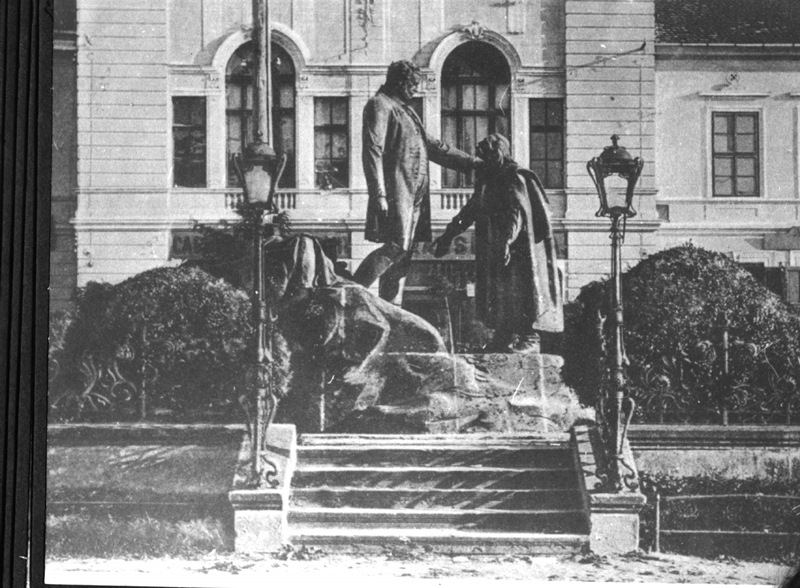 Wesseleny Statue (SJ-III-m-B-05151) - placed in front of Transylvania Building, the Wesselenyi Statue was made by the sculptor Fadrusz Janos, the author of Matei Corvin Statue from Cluj Napoca; it was built up as part of the Hungarian celebration of 1000 years since the 7 Hungarian tribes arrived in the Pannonia; the statue was exposed on the 18th September 1902.
Wesseleny Statue (SJ-III-m-B-05151) - placed in front of Transylvania Building, the Wesselenyi Statue was made by the sculptor Fadrusz Janos, the author of Matei Corvin Statue from Cluj Napoca; it was built up as part of the Hungarian celebration of 1000 years since the 7 Hungarian tribes arrived in the Pannonia; the statue was exposed on the 18th September 1902.
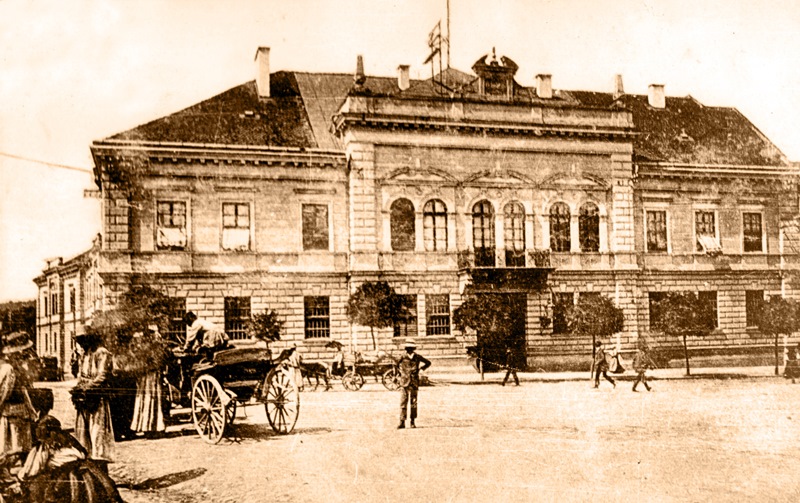 The City hall (SJ-II-m-B-04991) - the construction started in 1836 and was finalized in 1889; its function was from the beginning administrative: the prefecture, court house and the prosecution offices were in this building. The neo-baroque style building is in the group of administrative palaces from the end of XIXth century and the beginning of the XXth century Transylvania. It fits perfectly in the Iuliu Maniu Square, along with Transylvania building. The most impressive room of the City hall is the "Avram Iancu" Room, presently used as an event hall; the room is lightened by an imposing chandelier of wrought iron, weighting 1450 kg and 100 years old. The city hall is often hosting exhibitions, conferences and cultural events. The marriage room is another space that still keeps the scent of the past, especially through the 2 venetian style mirrors.
The City hall (SJ-II-m-B-04991) - the construction started in 1836 and was finalized in 1889; its function was from the beginning administrative: the prefecture, court house and the prosecution offices were in this building. The neo-baroque style building is in the group of administrative palaces from the end of XIXth century and the beginning of the XXth century Transylvania. It fits perfectly in the Iuliu Maniu Square, along with Transylvania building. The most impressive room of the City hall is the "Avram Iancu" Room, presently used as an event hall; the room is lightened by an imposing chandelier of wrought iron, weighting 1450 kg and 100 years old. The city hall is often hosting exhibitions, conferences and cultural events. The marriage room is another space that still keeps the scent of the past, especially through the 2 venetian style mirrors.
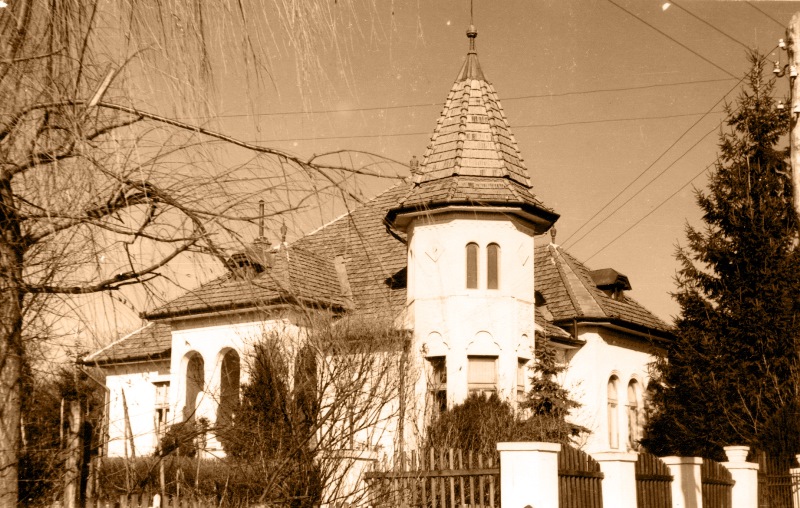 "Ioan Sima" Art Museum - the building housing the art county museum was built is 1910 and it was the property of Roth family until 1930; from that date it becomes an office of the National bank, who bought the building from its previous owners; in 1980 the building is administrated, for short time, by the Water Administration Office; from 1981, the art setion of the County History and Art Museum starts functioning here, under the name "Ioan Sima" Arts Gallery. The name comes from the painter born in Pericei, Salaj County that donated his personal collection of paintings, books, furniture and traditional art pieces; along Sima paintings, the collection also contains works of other important Romanian artists: Corneliu Baba, Aurel Ciupe, Rudolf Schwitzer Cumpăna, Petre Abrudan, Alexandru Mohi, Paul Sima, Ioan Mitrea, Victor Gaga, Vasile Pop Negreşteanu, Eugen Patachi, Aurel Contraş, Gheorghe Ilea, Marcel Munteanu; the art gallery also has a stunning butterfly collection donated by Tokacs Adalbert; recently the building was rehabilitated through a county project financed by European Funds (The Regional Operational Program).
"Ioan Sima" Art Museum - the building housing the art county museum was built is 1910 and it was the property of Roth family until 1930; from that date it becomes an office of the National bank, who bought the building from its previous owners; in 1980 the building is administrated, for short time, by the Water Administration Office; from 1981, the art setion of the County History and Art Museum starts functioning here, under the name "Ioan Sima" Arts Gallery. The name comes from the painter born in Pericei, Salaj County that donated his personal collection of paintings, books, furniture and traditional art pieces; along Sima paintings, the collection also contains works of other important Romanian artists: Corneliu Baba, Aurel Ciupe, Rudolf Schwitzer Cumpăna, Petre Abrudan, Alexandru Mohi, Paul Sima, Ioan Mitrea, Victor Gaga, Vasile Pop Negreşteanu, Eugen Patachi, Aurel Contraş, Gheorghe Ilea, Marcel Munteanu; the art gallery also has a stunning butterfly collection donated by Tokacs Adalbert; recently the building was rehabilitated through a county project financed by European Funds (The Regional Operational Program).
The building "Librăriile Sălajului" (SJ-II-m-B-04993) - built around 1900, it was a bank; presently it is in private ownership and is under rehabilitation with European grants and it will become a business center.
The Public Health Building (SJ-II-m-B-04994) - situated in Iuliu Maniu Square, property of Zalau Municipality, the building is presently occupied by the Public Health County Department, and this is why how it is known also in the list of local monuments; in the future, the owner plans to rehabilitate it and transform it into a museum to add up to the existing cultural offer of Zalau.
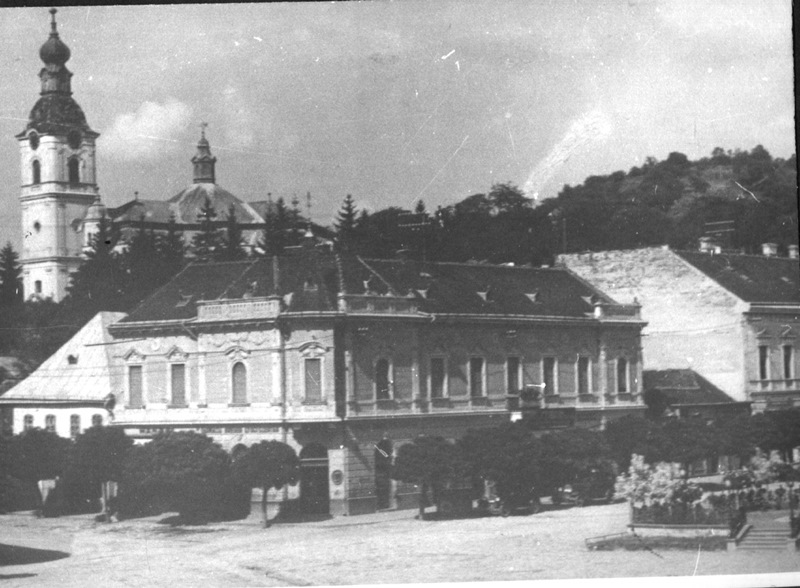 The Building of the County Cultural Department (SJ-II-m-B-04995) - was built around 1900 and it was used as a commercial space for almost all it existence; on the first floor there were shops, while at the upper floors there were offices and dwellings; the building was rehabilitated through a financing program of the Culture Ministry.
The Building of the County Cultural Department (SJ-II-m-B-04995) - was built around 1900 and it was used as a commercial space for almost all it existence; on the first floor there were shops, while at the upper floors there were offices and dwellings; the building was rehabilitated through a financing program of the Culture Ministry.
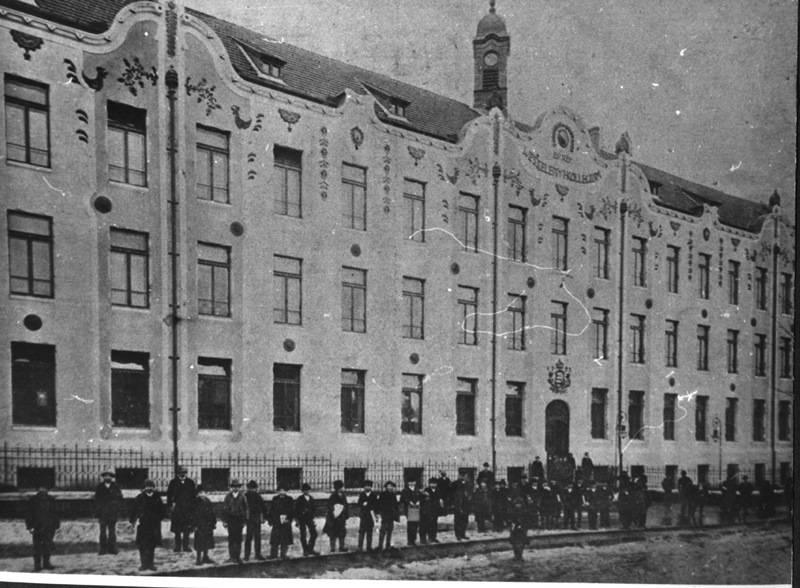 The Building of the National College „Silvania" (SJ-II-m-B-05006) - the college is composed actually from 3 separate buildings, constructed in different periods of time; the oldest part is from 1646 when it used as the first highschool from Salaj County; in the XIXth century, other 2 buildings are added up to the existing one; graduates from this college were at the top of Romanian elite, and not only Romanian; the college is today a pilgrimage place for those who studied here, while being also a historical monument. Some of the important figures that studied here are Ady Endre (Hungarian poet), Victor Deleu (Romanian politician, former mayor of Cluj between the two WW), Iuliu Maniu (Romanian politician, former first ministry of Romania between the two WW).
The Building of the National College „Silvania" (SJ-II-m-B-05006) - the college is composed actually from 3 separate buildings, constructed in different periods of time; the oldest part is from 1646 when it used as the first highschool from Salaj County; in the XIXth century, other 2 buildings are added up to the existing one; graduates from this college were at the top of Romanian elite, and not only Romanian; the college is today a pilgrimage place for those who studied here, while being also a historical monument. Some of the important figures that studied here are Ady Endre (Hungarian poet), Victor Deleu (Romanian politician, former mayor of Cluj between the two WW), Iuliu Maniu (Romanian politician, former first ministry of Romania between the two WW).
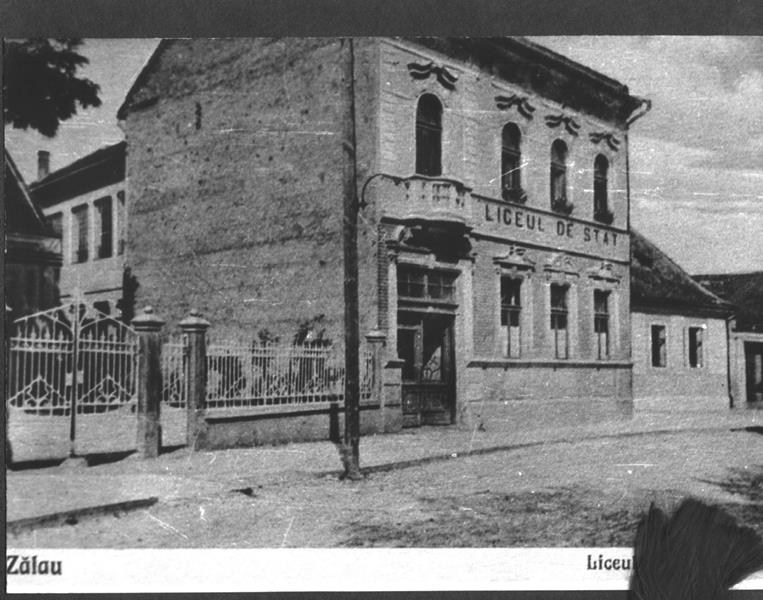 The Building of the County Art and History Museum (SJ-II-m-B-05007) - opened in 1951, the museum is functioning in the present location from 1971; previously, the building dated back to 1900, was the headquarter of the Craftsman Association; in 1924 - 1925 the State Lyceum for boys was located here; the building was rehabilitated by the County Council through a project financed by the Regional Operational Program.
The Building of the County Art and History Museum (SJ-II-m-B-05007) - opened in 1951, the museum is functioning in the present location from 1971; previously, the building dated back to 1900, was the headquarter of the Craftsman Association; in 1924 - 1925 the State Lyceum for boys was located here; the building was rehabilitated by the County Council through a project financed by the Regional Operational Program.
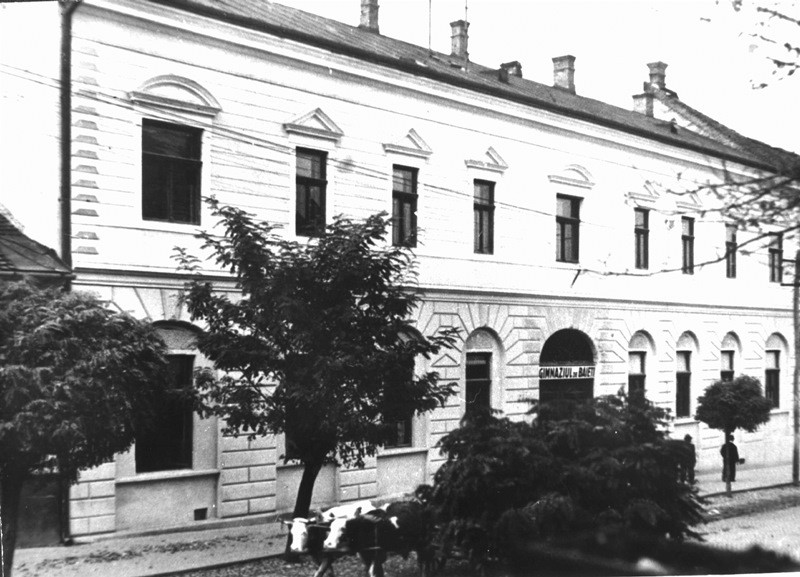 „Simion Bărnuţiu" School (SJ-II-m-B-04996) - the construction started in 1883 and was finalized in 1900, being used as a school for girls; it was one of the first schools in Zalau where the teaching was in Romanian language; the façade of the building is in an eclectic style.
„Simion Bărnuţiu" School (SJ-II-m-B-04996) - the construction started in 1883 and was finalized in 1900, being used as a school for girls; it was one of the first schools in Zalau where the teaching was in Romanian language; the façade of the building is in an eclectic style.
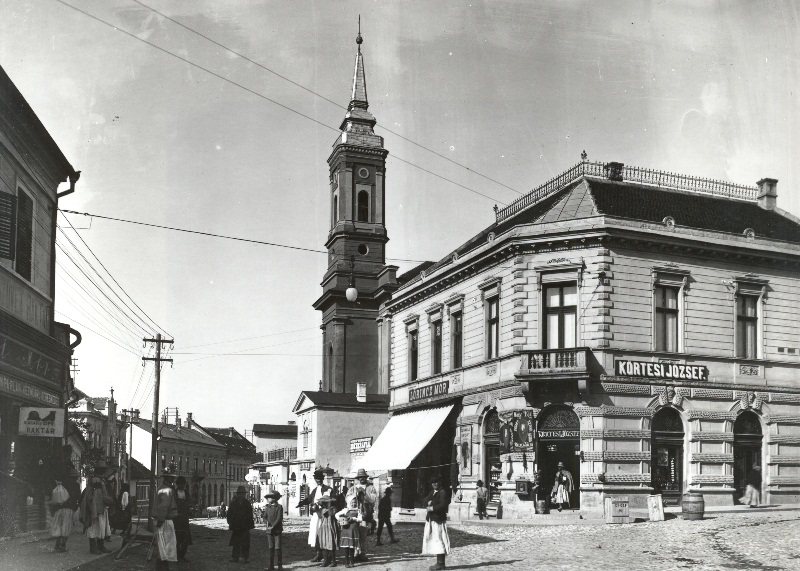 The catholic church (SJ-II-m-B-04997) - the building of the present church began in 1878 and was finalized after 4 years; until then, the catholic community from Zalau, not very numerous, had a chapel and a wood tower with 3 bells; in 911 other 2 bells are bought to be put into the new church; in 1917, the army confiscates 4 of the 5 bells, but in 1929 the church receives other 2; today the church has 3 bells.
The catholic church (SJ-II-m-B-04997) - the building of the present church began in 1878 and was finalized after 4 years; until then, the catholic community from Zalau, not very numerous, had a chapel and a wood tower with 3 bells; in 911 other 2 bells are bought to be put into the new church; in 1917, the army confiscates 4 of the 5 bells, but in 1929 the church receives other 2; today the church has 3 bells.
.jpg) The Protestant Church Assembly (SJ-II-a-B-05001) - the present building of the protestant church is from 1906, excepting the tower that was part of an older church, from 1797; actually, the first church to be built on the same location was from the XIIth - XIIIth centuries, being a catholic church that was destroyed or demolished for safety reasons; the today church has a 1906 organ and an horologe also from the beginning of the XXth century, both functional.
The Protestant Church Assembly (SJ-II-a-B-05001) - the present building of the protestant church is from 1906, excepting the tower that was part of an older church, from 1797; actually, the first church to be built on the same location was from the XIIth - XIIIth centuries, being a catholic church that was destroyed or demolished for safety reasons; the today church has a 1906 organ and an horologe also from the beginning of the XXth century, both functional.
The Assumption Cathedral (SJ-II-a-B-04984) - the cathedral was dedicated in September 1934 by the bishop Valeriu Traian Frențiu, initlaly being a Greek - catholic church; today it belongs to the Orthodox Church.
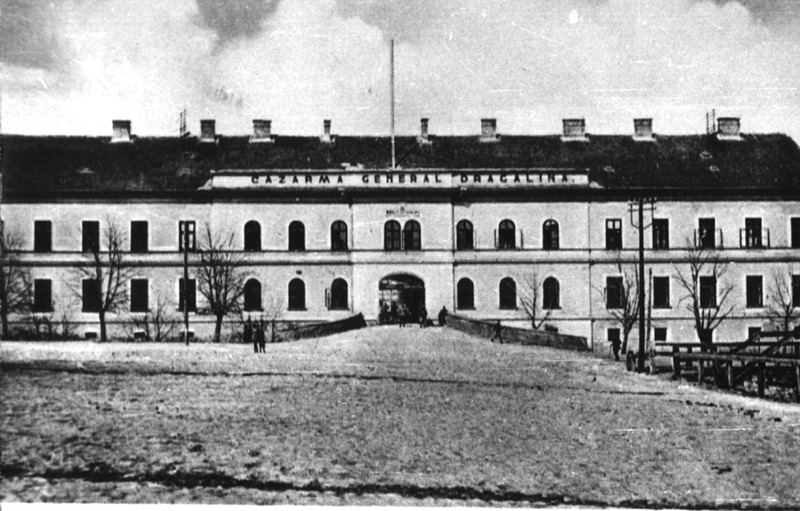 The Garrison "General Dragalina" (SJ-II-m-B-04985) - started in 1854 and finalized in 1880, the present building of the County Cultural and Art Center of Salaj was built in an "U" shape, according to the Austrian model and having an interior yard; the first occupants of the building were the members of the Hungarian Infantry Battalion of Salaj; from 1919 until 1947, it becomes the home of the only Romanian battalion formed on the Italian front during the first WW, the 7th Mountain Huntsmen Battalion, and it also gets a name: "General Dragalina"; the building becomes the property of the Romanian Defense Ministry in 1948 which grants it to Salaj County Council in 2010; the building was rehabilitated through the Operational Regional Program with European grants.
The Garrison "General Dragalina" (SJ-II-m-B-04985) - started in 1854 and finalized in 1880, the present building of the County Cultural and Art Center of Salaj was built in an "U" shape, according to the Austrian model and having an interior yard; the first occupants of the building were the members of the Hungarian Infantry Battalion of Salaj; from 1919 until 1947, it becomes the home of the only Romanian battalion formed on the Italian front during the first WW, the 7th Mountain Huntsmen Battalion, and it also gets a name: "General Dragalina"; the building becomes the property of the Romanian Defense Ministry in 1948 which grants it to Salaj County Council in 2010; the building was rehabilitated through the Operational Regional Program with European grants.
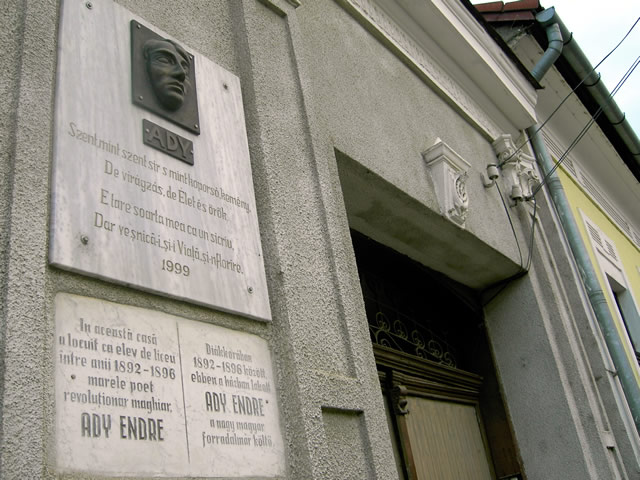 The memorial house Ady Endre (SJ-II-m-B-04987) - the house in which the Hungarian poet Ady Endre lived during his secondary studies (1892 - 1896) is situated on the 22 Decembrie 1989 street no. 45 (the entire street is actually on the list of the historical monument as an urban assembly); presently the house is in private property, the only sign that reminds about the presence of the Hungarian poet is a plague placed on the house.
The memorial house Ady Endre (SJ-II-m-B-04987) - the house in which the Hungarian poet Ady Endre lived during his secondary studies (1892 - 1896) is situated on the 22 Decembrie 1989 street no. 45 (the entire street is actually on the list of the historical monument as an urban assembly); presently the house is in private property, the only sign that reminds about the presence of the Hungarian poet is a plague placed on the house.
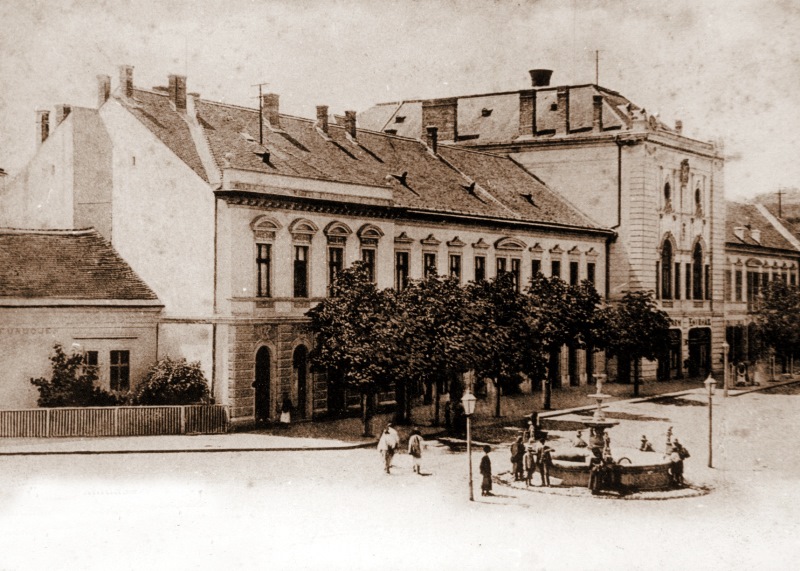 The Cupids Fountain - even if it is not on the historical monuments list, the fountain is part of the Urban Assembly Iuliu Maniu Square and is an important landmark for the city's inhabitants; it was built in the second half of the XIXth century (around 1854) and it functioned as a spring well that supplied drinking water for the people from Zalau through the 4 cupids placed around the well; the fountain was also a meeting place.
The Cupids Fountain - even if it is not on the historical monuments list, the fountain is part of the Urban Assembly Iuliu Maniu Square and is an important landmark for the city's inhabitants; it was built in the second half of the XIXth century (around 1854) and it functioned as a spring well that supplied drinking water for the people from Zalau through the 4 cupids placed around the well; the fountain was also a meeting place.
 www.inforegio.ro
www.inforegio.ro
Investing in your future! Project selected in the Regional Operational Programme and co-funded by the European Union through the European Regional Development Fund. This report does not necessarily reflect the official position of the European Union or the Romanian Government. For detailed information about other programs financed by the European Union, please visit www.fonduri-ue.ro










